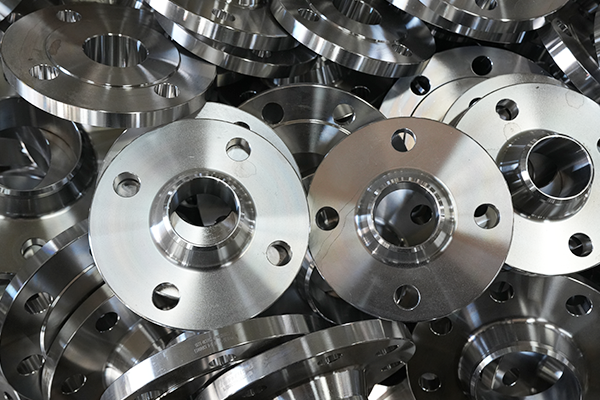NewsDetails
Optimal Flange Layout in Industrial Piping Systems
author:Zhantong time:2025-05-23 00:42:14 Click:77
Flange placement significantly impacts safety, maintenance efficiency, and system integrity in industrial pipelines. Below are key principles, best practices, and industry standards for optimal flange layout.
1. Key Principles of Flange Layout
(1) Minimize Flange Count (Where Possible)
Fewer flanges = Lower leak risk & maintenance cost.
Use welded joints for permanent connections in high-pressure/critical systems.
(2) Strategic Placement for Maintenance & Access
Install flanges near:
Valves (for isolation & replacement).
Pumps/compressors (for disassembly).
Instrumentation (flow meters, pressure gauges).
Ensure adequate clearance for bolt tightening and gasket replacement.
(3) Avoid Stress Concentration Zones
Never place flanges near:
Pipe bends or tees (high mechanical stress).
Vibration sources (e.g., reciprocating pumps).
Use weld neck flanges (WN) in high-stress areas for better load distribution.
2. Best Practices for Flange Spacing & Location
(1) General Spacing Guidelines
Pipe Size (inches)
Max Recommended Spacing (feet)
Reason
≤2" 15-20 ft Small pipes need frequent support; flanges act as anchors.
3"-6" 20-30 ft Balance between accessibility and structural integrity.
8"-12" 30-50 ft Larger pipes have higher rigidity; fewer flanges needed.
≥14" 50-70 ft Minimize flange count due to weight & cost.
(2) Critical Locations Requiring Flanges
Equipment Connections (pumps, heat exchangers, reactors).
Pipeline Sections Requiring Frequent Cleaning/Inspection (e.g., slurry lines).
Branch Connections (for future expansion or redundancy).
(3) High-Risk Areas to Avoid Flanges
Underground or submerged pipelines (corrosion risk).
High-cycle fatigue zones (e.g., near vibrating machinery).
Fire-prone areas (use welded joints for fire safety).
3. Flange Alignment & Installation Best Practices
(1) Proper Bolt Tightening Sequence
Follow cross-pattern tightening (ASME PCC-1) to avoid gasket distortion.
Use torque wrenches for uniform bolt load.
(2) Gasket Selection Based on Layout
Flange Location
Recommended Gasket
High-temperature steam Spiral-wound (SS + Graphite)
Acid/caustic service PTFE-lined or flexible graphite
Offshore/seawater RTJ metal gaskets (API 6A)
(3) Support & Alignment
Use pipe hangers/supports near flanges to prevent sagging.
Ensure no misalignment during welding/assembly (ASME B31.3).
4. Industry-Specific Layout Considerations
(1) Oil & Gas (Onshore/Offshore)
Wellheads & manifolds: RTJ flanges (API 6A) with minimal spacing.
Subsea pipelines: Avoid flanges; use welded connections for leak prevention.
(2) Chemical & Petrochemical Plants
Reactor feed lines: Flanges every 20-30 ft for catalyst replacement.
Corrosive fluid lines: Use lap joint flanges for easy gasket replacement.
(3) Power Plants (Steam & Cryogenic)
High-pressure steam: Weld neck flanges with RTJ sealing.
LNG pipelines: Stainless steel flanges with low-temperature gaskets.
5. Common Mistakes & How to Avoid Them
Mistake
Solution
Too many flanges in high-pressure lines Replace with welded joints where possible.
Flanges placed near vibrating equipment Use flexible couplings or relocate flanges.
Poor bolt tightening leading to leaks Follow ASME PCC-1 torque sequence.
Misaligned flanges causing stress Use laser alignment tools during installation.
6. Future Trends in Flange Layout Design
Digital Twin Integration: Simulate flange stress using AI-based modeling.
Modular Piping Systems: Pre-fabricated skids with optimized flange placement.
Smart Flanges: IoT-enabled bolts for real-time leak detection.
Conclusion
A well-planned flange layout reduces leaks, maintenance costs, and downtime. Key rules:
✔ Minimize flanges where possible.
✔ Place flanges strategically for accessibility.
✔ Follow industry standards (ASME, API) for safety.
 Recommended Products
Recommended Products
 Contact us
Contact us
—— Contact:Manager
—— Tel:+86 15231788966
—— Email:info@zhantongpipe.com
—— Url:https://www.zhantongpipe.com
—— Address:Mengcun Hui Autonomous County, Cangzhou City, Hebei Province









